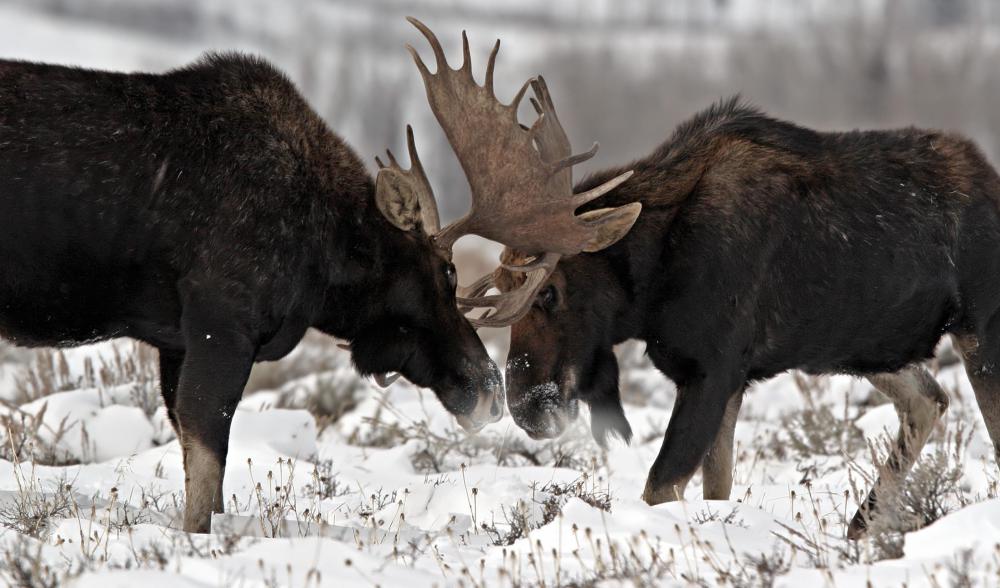At AllThingsNature, we're committed to delivering accurate, trustworthy information. Our expert-authored content is rigorously fact-checked and sourced from credible authorities. Discover how we uphold the highest standards in providing you with reliable knowledge.
What Is the Labrador Wolf?
The Labrador wolf is a subspecies of the gray wolf. Its primary habitat is located in Canada, and it resides primarily in the regions of northern Quebec and the province of Newfoundland and Labrador. This subspecies of wolf is otherwise known as Canis lupus labradorius. It was first discovered in the late 1930s by noted biologist and zoologist Edward Alphonso Goldman. The medium-sized wolf is considered to be an endangered species.
Due to the fact that Labrador wolves live in very harsh and rugged terrain, and also because of their reticent natures, they have been one of the more difficult subspecies of wolf to observe and study. They are mid-sized wolves, and the weight of an average adult ranges anywhere from 60 to 70 pounds (about 27 to 32 kg). Labrador wolves carry many of the characteristic traits of the gray wolf. For instance, they have long, bushy tails, upright pointed ears, and a gray coloring to their fur, although the Labrador wolf’s coat is often white or a very light gray rather than a dark, mottled gray.

Like all wolves, the Labrador wolf is a pack animal, meaning that it lives and hunts with a group of other wolves. Wolves are carnivores, and the Labrador wolf preys on other animals commonly found in the region where it lives. For instance, it is known to hunt moose, white-tailed deer, caribou, and beavers. During certain times of year when prey is scarce, the Labrador wolf has even been known to eat fish and rodents.
Well adapted to its severe environment, the Labrador wolf's thick inner layer of fur keeps it warm even on the coldest days. The tough outer layer repels water, ice, and snow. The large, powerful paws have bristly hairs underneath, allowing the wolves to skillfully maneuver through rocky, uneven terrain while keeping their traction even with heavy ice and snow.
Wolves are of the genus Canis and are close cousins to the dogs that many people keep as pets. Although they might look like dogs, wolves are not domesticated animals and certainly do not make good pets. Like all wolves, the Labrador wolf is believed to have evolved from a type of prehistoric dog called a miacid. The miacids are thought by many to have originated in Asia or possibly South America, and their descendents migrated and found their way to areas north.
There are close to 50 subspecies of wolves known throughout the world. Several species of wolves are considered extinct or in danger of extinction. The extinction or endangerment of wolves is due to several reasons, including environmental factors, hunting, and habitat destruction. The Labrador wolf is on the endangered species list and is considered to be at risk for extinction.
Frequently Asked Questions
What is the Labrador Wolf?
The Labrador Wolf is a subspecies of the Gray Wolf, known scientifically as Canis lupus labradorius. It is native to Labrador and northern Quebec in Canada. This wolf is adapted to the harsh, cold climate of the region and has a thick fur coat that helps it survive in its subarctic environment.
How does the Labrador Wolf differ from other wolf subspecies?
Labrador Wolves are distinguished by their size, which is slightly smaller than some other Gray Wolf subspecies, and their coat color, which tends to be lighter, often with a mix of grey, white, and brown fur. Their physical adaptations are suited to the cold, forested areas where they live, including their dense, insulating fur.
What is the diet of the Labrador Wolf?
The Labrador Wolf is a carnivorous predator that primarily feeds on large ungulates such as caribou and moose. According to studies on wolf diets, they may also hunt smaller mammals like beavers and hares when larger prey is scarce, demonstrating their adaptability as opportunistic feeders.
What is the conservation status of the Labrador Wolf?
As a subspecies of the Gray Wolf, the Labrador Wolf's conservation status is not individually assessed, but the Gray Wolf species as a whole is listed as "Least Concern" by the IUCN Red List. However, specific populations, including the Labrador Wolf, may face threats from habitat loss and human activities.
How do Labrador Wolves impact their ecosystem?
Labrador Wolves play a crucial role as apex predators in their ecosystem. They help maintain healthy populations of their prey species by culling the weak and sick. This predatory pressure can lead to stronger, more resilient prey populations and can also influence the distribution and behavior of other species within their habitat.
Are Labrador Wolves dangerous to humans?
Labrador Wolves are generally elusive and avoid contact with humans. There are very few documented cases of wild wolves attacking people. Most wolf-related dangers arise from human activities such as encroachment on wolf habitats or habituation due to feeding, which can alter the natural behavior of wolves and potentially lead to conflicts.
AS FEATURED ON:
AS FEATURED ON:











Discuss this Article
Post your comments